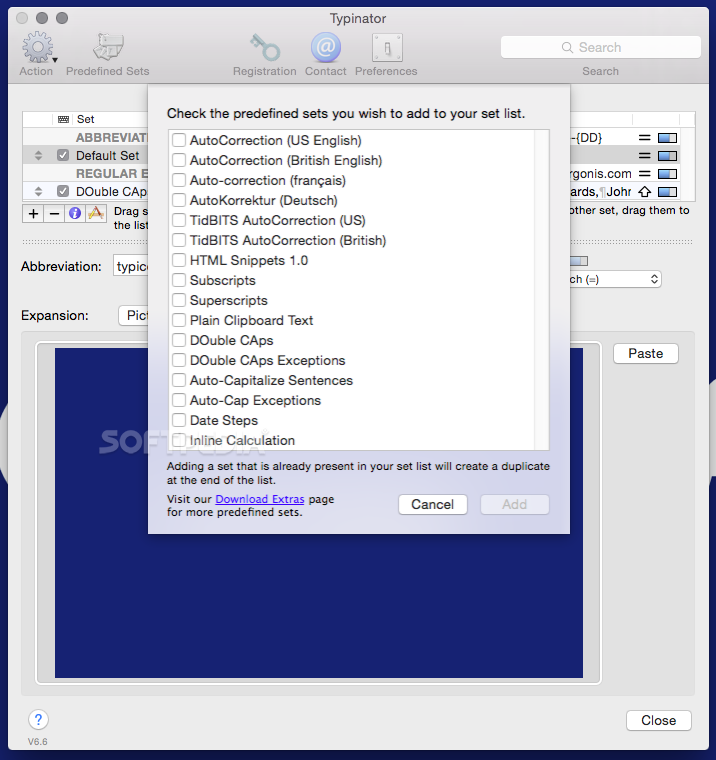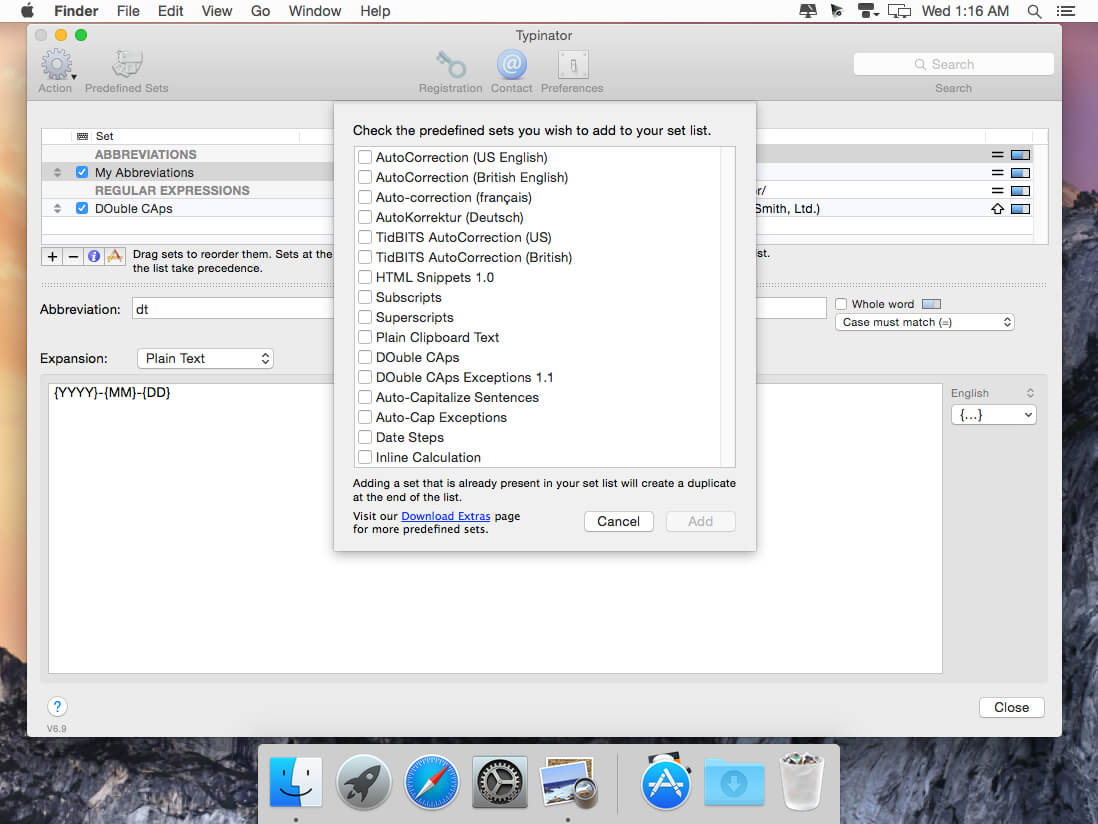

Typinator also doesn’t require you to type any terminator character to signal that what precedes is an abbreviation instead, it watches to see whether you’ve typed an abbreviation at the start of a word, and if you have, it just expands it (and if that isn’t what you intended, Undo restores the abbreviation in most applications). It also means that entering a Typinator expansion wipes out whatever was on the clipboard I don’t quite see why this is necessary, since it ought to be possible for Typinator to restore the old clipboard contents afterwards, but in any case you can work around this, if you find it problematic, with a multiple clipboard utility such as CopyPaste or ClipBlock. This is done by pasting, which means that Typinator can enter images if an application allows this. It watches the characters you actually enter by typing – I don’t know how – and when you type an abbreviation, it uses GUI scripting to select it and to substitute the expansion. Typinator, on the other hand, is an ordinary application.

TypeIt4Me is an input method you switch to it using your Input menu (the status menu at the right end of the menu bar whose icon is usually some country’s flag), which means that you can’t use it in conjunction with any other input method or keyboard layout. The approaches taken by the two utilities vary radically. Typinator’s primary competition is TypeIt4Me, which I’ve also mentioned in these pages. For example, I could type “tb” to generate “TidBITS”, or “AS” to generate “AppleScript”, and so on for any boilerplate, short or long, that I expect to use. The idea is that you provide Typinator with a set of abbreviations and expansions when you’re working in any program, if you type an abbreviation, Typinator substitutes the corresponding expansion.
#Windows equivalent of typinator windows


 0 kommentar(er)
0 kommentar(er)
